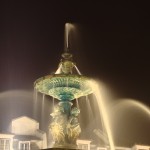Stunning light effects, fantastic lines and forms, a variety of deep and shiny colors… Enter a fascinating world of long exposure photography and discover how to create unique images! Experimenting with long-duration shutter speed can be both exciting and challenging. Many SAE students find it incredibly inspiring as well. Would you like to join them? Just grab your digital camera and follow a bunch of basic rules.
Text by Joanna Wróblewska
Pictures downloaded from all-free-download.com
If you have a digital camera with a manual shutter speed and aperture control, you might want to try out long exposure photography. It uses so called long-duration shutter speed, which is available in many digital cameras like advanced compacts and dSLRs. While shooting, your primary task will be to find a balance between fundamental camera settings in order to get good quality well-exposed pictures. Experimenting will take some time, but this is probably the most exciting part (maybe apart from listening to a positive feedback from your teachers and peers).
There are three fundamental rules of working with long-exposure photography. First, you should be aware of simple techniques and tricks of catching motion. Keeping your pictures sharp is essential, unless you want them to be blurry. Finally, observing light carefully will surely pay off in a better understanding of digital photography in general and stunning light effects in your pictures. Long exposure photography will give the best effect when shooting at night and at sunrise or sunset, unless you use special ND filters that allow photographers to prolong the exposure time in daylight.
Catch motion
Shutter speed is one of the fundamental camera setting, the same as aperture and ISO. It influences the record of the movement in pictures. If the exposure time is short enough (1/60s and less) you will most likely catch a frozen motion of a subject like, for instance, a person jumping or a biker crossing a street. If the exposure time is longer (1/60s and more) you have a bigger chance of recording a continuous motion. In this particular case things get more abstract: moving objects are blurry, water surface looks smooth and unusual, clouds and stars create undefined shapes on the sky, instead of cars you record shiny lines created by colorful lights. Long exposure photography becomes intriguing when you observe, recognize and record motion. This is why many photographers will use exposure times that are much longer than one minute.
Make it sharp
Camera stabilization is a must. If you do not have a tripod, get it. If you are not willing to buy it, use other types of stabilization for attaching the camera to a chosen surface with a piece f tape. For long exposure photography, you will probably need a remote in order to release the shutter at the right moment and control the exposure time. If you do not have one, use a self-timer. It will prevent your photographs from micro shakes and guarantee decently sharp, good-looking images. Shooting without a stabilization might work as well, but be aware of the final effect. There is a big chance of not having any sharp elements in the picture, in this case.
Observe light
Become a patient observer. Finding a balance between shadows and highlights will take some time. Set the right shutter speed and start to experiment with aperture and ISO settings. For long exposure photography, you may want to use the highest possible openings and a very low ISO. Using small apertures values can cause problems in getting a proper exposure. Using high ISO can result in extremely grainy pictures, which you will notice only afterwards, on a computer screen.
Long exposure photography might bring you a lot of satisfaction. Moreover, each photograph is original and unique. It will always show motion in a different, astonishing ways. Treat working with this kind of photography as an experiment and remember that abstract pictures of light can become impressive background for websites, blogs, and digital graphics. Make your portfolio richer and become a long exposure photography fan the same as me and my SAE students!
Learn more:
The Ultimate Guide To Long Exposure Photography
Tips for Long Exposure Photography
Long Exposure Photography – tutorial
- Abstract car lights in London
- Long exposure photography in the city
- Long exposure time makes water look smooth and unusual




